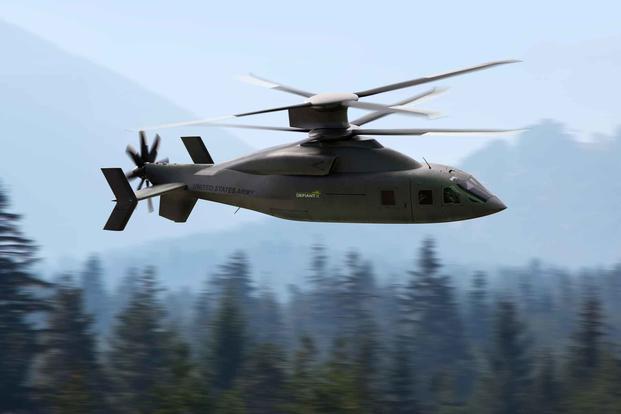Sikorsky-Boeing is up against Bell Textron's V-280 Valor
tiltrotor aircraft in the FLRAA competition. A contract award is expected sometime in 2022.
While Sikorsky-Boeing declined to offer details on all the upgrades, the sleek-bodied design includes a modified exhaust system to reduce the aircraft's heat signature and a tricycle-style landing gear "which improves ... stability landing in and taxiing in combat and austere environments," McBryan said in a phone call.
The Defiant X also incorporates elements of Sikorsky's X2 experimental high-speed compound helicopter, which was also used as a starting point for the SB1> Defiant, according to a news release.
The upgrades were born out of the Army's proposed requirements for its next-generation aircraft and additional testing of the Defiant system, the team said.
The Defiant X is "going to go twice as far twice as fast as the current Black Hawk does today," Jay Macklin, director of business development for Sikorsky's Future Vertical Lift program, said during the call.
While the two officials declined to specify the Defiant X's max speed, the SB>1 Defiant achieved 211 knots during flight in October, with 232 knots
at its top descent speed.
To improve on Defiant, engineers logged 1,500 simulation hours, 135 hours in the Propulsion Systems Test Bed, or PSTB, and "31 flights, accumulating 26 hours in flight," the companies said.
McBryan said there is autonomy layered within the semi-automatic, electronic avionics system that uses computers to process flight control, known as fly-by-wire. "This is really designed for growth, and so, out in the 2030s, as missions change and threats change, there's that growth capability," she said.
But companies won't add additional autonomy functions unless the Army asks for them, Macklin said.





